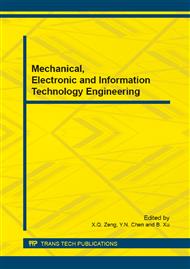p.325
p.333
p.338
p.343
p.347
p.351
p.355
p.359
p.365
Adaptive Detection Algorithm Research of Road Image Edge Line
Abstract:
Road image edge detections are sensitive response to light intensity, the whole mean gray
value of road image changed significantly under different illumination. Using one algorithm can not
be effectively detected to road edge line. From the analysis of characteristic situation of different
light road image, we put forward a algorithm of road edge line detection under different illumination.
The example studied showed that this algorithm could obtain more ideal image edge from the road
gray image, and certain anti-noise performance could be generated.
Info:
Periodical:
Pages:
347-350
Citation:
Online since:
March 2015
Keywords:
Price:
Сopyright:
© 2015 Trans Tech Publications Ltd. All Rights Reserved
Share:
Citation:


